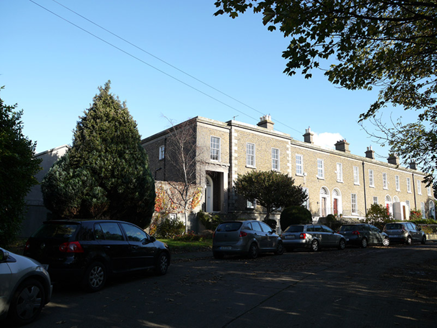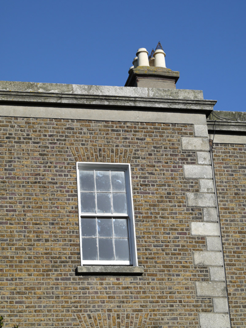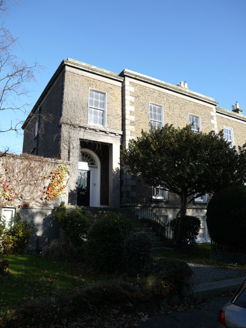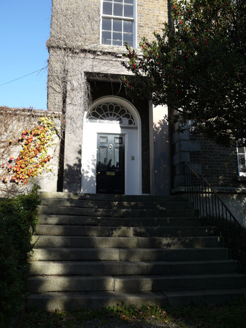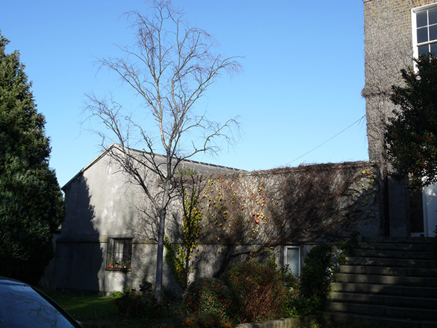Survey Data
Reg No
50030183
Rating
Regional
Categories of Special Interest
Architectural, Artistic
Original Use
House
In Use As
House
Date
1845 - 1850
Coordinates
319026, 236023
Date Recorded
05/11/2014
Date Updated
--/--/--
Description
End-of-terrace three-bay two-storey house over basement, built 1847, having slightly recessed entrance bay to front (south) elevation, with entrance set back from open integral porch. Pitched M-profile natural slate roof with parapet to front elevation having cut granite platband and cornice, smooth rendered chimneystacks with cornice and clay chimneypots and some cast-iron rainwater good. Brown brick laid in Flemish bond to front elevation having cut granite quoins, and cut granite stringcourse over smooth rendered walls to basement level. Smooth rendered walls to west gable. Square-headed window openings with cut granite sills and six-over-six pane timber sliding sash windows to upper floors and eight-over-eight pane timber sliding sash windows to basement level. Round-headed door opening having petal fanlight and timber panelled door, having rendered piers to outer side of porch and modillions to cornice to latter. Cut granite entrance steps and platform having cast-iron balustrade. Set back from road and having cast-iron railings on cut granite plinth wall, and cast-iron pedestrian gate to enclosed front garden. Situated off Clontarf Road facing shared enclosed green. Associated former gate lodge to west. Single-storey outbuilding with half dormer attic to west side having pitched natural slate roof and smooth rendered walls.
Appraisal
This terraced house retains its early form and character. Historic fabric remains to the entrance platform, fanlight and railings. Together with the outbuildings, neighbouring terrace, gate lodge and shared green this group of buildings forms a largely intact example of mid-nineteenth-century domestic developments. The terrace was built in 1847 by a steward of the Vernon estate, Isaac Warren, on ground obtained from the Vernon estate. The raised entrance provides views of the seafront, a characteristic that became desirable in the mid-nineteenth century, while the shared green gives privacy from the thoroughfare of Clontarf Road. This substantial house forms one bookend to what had been envisaged as longer than the six-house terrace of which it forms part, the remainder were never built. The seafront developed in irregular terracing and was designated Clontarf Road in 1912.
